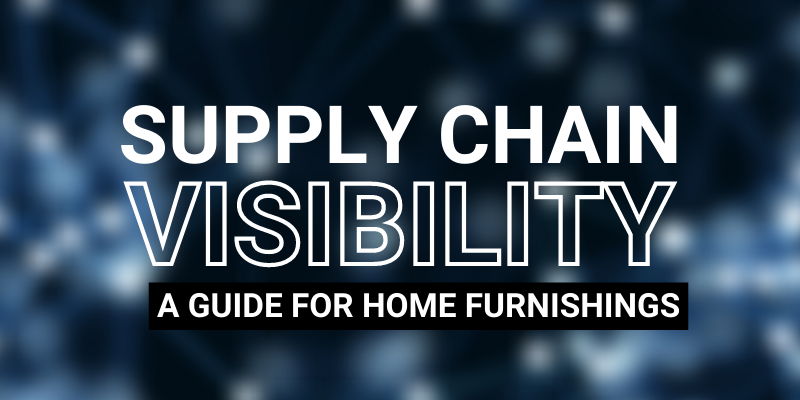The home furnishings industry is experiencing unprecedented delays in the supply chain. With the increase of eCommerce and the rise of purchasing home furnishings products, retail orders we’re coming in faster than the manufacturers could produce and suppliers could ship the products. Supply chain management can impact the profitability of a retail organization. And because of the impacts from COVID-19 supply chain management weaknesses broke the customer experience and increased friction in the buying journey. We’re going to walk you through the different areas of the home furnishing supply chain and how EDI has improved supply chain visibility for improved service and transparency for increased customer satisfaction.
Instant gratification is what consumers and business partners are demanding. They want it quickly and securely. One of the biggest topics that businesses are searching for in 2020 and 2021 is business automation. Specifically, the benefits that EDI can provide to retail.
WHAT IS SUPPLY CHAIN VISIBILITY
Supply chain visibility is exactly how it sounds. It is managing the supply chain for efficiency. It gives each business in the supply chain, the retailer, the manufacturer, logistics, even the customer, transparency into the order process.
According to NetSuite supply chain visibility (SCV) is:
“The ability to track individual components sub-assemblies and final products as they travel from supplier to manufacturer to customer. The scop– for example, are raw materials included and will the item be tracked with forwards and backwards tracing– depends on the product. Supply chain visibility is enabled by supply chain management technology which provides near real time data about logistics and supply chain operations.”
In essence the supply chain is breaking down the barriers between partners to get order placed, produced, and packaged to the customer as efficiently as possible.
WHAT IS EDI
Now what role does EDI play in all of this? EDI is one of the business systems that creates efficiencies in the supply chain.
If you missed our webinar about EDI benefits, watch it here.
60% of all businesses are using EDI for transactions.
EDI automates the process and removes risk and time delays. It is the transaction of business documents in a standard electronic format between business partners. This would seem unnecessary to many businesses that operate within a manual process. In reality, most of the time businesses aren’t using the same formats or systems. They also have their own individual business requirements.
EDI is a translator between the partners. It takes the retailer’s input information and language then transmits that to the manufacturer using the language and receiving fields that work within its system. Return documents to the retailer go through the same translation process. And all of these happen in a seamless, electronic delivery.
EDI providers can connect any system to any system; giving retailers and manufacturers and logistics the freedom to do business with the best partners without the interruption of this process.
HOW EDI WORKS
A customer places an order using a retailer’s website. The retailer’s RMS sends the purchase order through MicroD’s EDI translator who sends a translated version to manufacturer. The manufacturer’s ERP system delivers a PO Acknowledgement through MicroD’s EDI translator who sends the translated information to the retailer’s RMS. When the order is filled, the manufacturer’s ERP sends a Load Tender through MicroD’s EDI translator. The translator delivers the right language and format to the logistics carrier.
When the manufacturer receives the translated freight details and invoice from logistics through EDI, the advance shipment notice and invoice transmits to the retailer’s RMS system using EDI to relay the data in a format that the RMS can understand.
By using EDI, any business in this supply chain example can connect to one another seamlessly.
But, what would happen if the retailer is sending the information in a completely different IT language than the manufacturer? If there is no transmitting system in place to communicate this information between the two business partners, delays and confusion ensue.
EDI reduces the errors and improves efficiency by eliminating the heavily manual process of order to cash.
WHO BENEFITS FROM USING EDI
Everyone benefits from using EDI. When a retailer is actively using EDI to communicate purchase orders to their manufacturing partners, the retailer receives more accurate information to share with the customer on shipping dates. Will go into detail about how the EDI impacts supply chain for retailers. From retailers to the manufacturers that produce product to the carriers that ship and deliver the product, each part and player of the supply chain benefits from using EDI. 
HOW THE SUPPLY CHAIN WORKS
Once an order is placed by a consumer, retailers want to get the order to the manufacturer as completely and quickly as possible. It needs to be seamless and without error. When orders have issue or error, the manufacturer has to continue communicating with the retailer about the order accuracy. This process volleys between the retailer and the manufacturer until both are aligned on the order expectation.
Once the order is accepted by the manufacturer into their production system, the supply chain starts working. Each step of production, from acquiring the raw materials to build the furniture to the placement in a container for delivery to the last mile shipment is all part of the supply chain. We call this, “order to cash” inclusion—covering each part of the journey.
The supply chain encompasses different partners from the manufacturer to logistics. And each uses unique systems to communicate about orders. But this is just one example of one product. Scale that supply chain to millions of dollars’ worth of home furnishings products in the short time span of 2020’s product boom.
THE 2020 EFFECT ON SUPPLY CHAIN
The home furnishings industry, along with many other industries, witnessed record numbers of orders for home furnishings in 2020. Shoppers were at home. And home was the place that they wanted to improve. For many, saved budgets from vacations went into home renovations. The emergence of home created the emergence of home furnishings products. But because no retailer or manufacturer could predict this 10-year growth in 10 months, product backlog became a very real issue very quickly.
When orders started to increase exponentially through the retail store, retailers faced the new challenge of communicating purchase orders to many manufacturers. Many North American manufacturers were shut down in able to produce any furniture or accept any orders. Which created an issue with fulfillment.
Challenges in the Supply Chain
Everyone is feeling the pain of not being able to fulfill. If the retailer can’t deliver the product to the customer, the customer satisfaction drops significantly. In fact, many of the returns we’re seeing in home furnishings are due to product inventory. Also, if retailers don’t have product to deliver there is no product to sell. Retailers must protect profitability and with the supply chain in disruption from 2020 retailers were hesitant or in some cases unable to sell more product to meet the demand. 
And it’s not just retailers struggling with the weight of the disrupted supply chain. In 2020 many manufacturers were working with limited staff or closed down plants. Production times started to increase significantly. Due to the fact that much of the supply chain crosses borders and oceans in countries that have had greater impacts from COVID-19 research shows the supply chain started to arrest far earlier than the retail stores felt the result. Delays from China or other overseas suppliers stacked on delays on delays. 2020 was a domino effect of the supply chain delays.
Containers are making new records as the supply chain starts to move forward again. But With the record amount of backlog, it will take the remainder of this year to release the seize on this supply chain.
HOW EDI INCREASES SUPPLY CHAIN VISIBILITY
Data integrity is critical to a well-oiled supply chain. While there may be disruptions in acquiring the product or raw materials, the awareness and knowledge of accurate dates expected orders and other elements of the supply chain are critical.
If the retailer and the manufacturer aren’t efficiently transmitting order acknowledgements and other critical business documents, it can be challenging to secure the order with the manufacturer which then delays the manufacturer’s ability to communicate with the carriers at the end of the supply chain. Data moves through the entire supply chain forward and backward. Think of each part of the supply chain like a triangle. Each side is as important to the success of this process as the other. Because each depends on the other to be as efficient as possible.
How EDI supports the supply chain visibility is ensuring that data is accurate and streamlined for efficiency. EDI connects the retailer to the manufacturer with better more standardized automated document sharing. Increasing the productivity of purchase orders and order acknowledgements. Replacing the manual process and reducing the time from order to cash.
Each part of the supply chain needs more accurate information faster. The data passing back and forth in the systems informs each step of the supply chain so they can communicate the best dates to the customer. More visibility to the customer is better satisfaction from the purchase.
The longer it takes to send the purchase order, the less planning a manufacturer gets in production and the later order acknowledgements arrive. All of this plays into the dates your customer receives for estimated shipping.
EDI provides document delivery to update each part of the supply chain and prevent bottlenecks or manage the exceptions.
BENEFITS OF SUPPLY CHAIN VISIBILITY
Why does any of this matter? Business has operated through depressions, recessions, and the boom of new shopping trends. Many businesses have done this for decades—some for a century.
We’ve been depicting this process on a small scale—a single product at a single retail store from a single manufacturer with a single carrier. Scale this operation up to 2021’s state of orders, inventory, and challenges and the automation of order creation and processing is critical. You may wonder how business could be done without EDI and the visibility to your supply chain. Here’s why it matters.
This next section is going to identify the benefits of having visibility into the supply chain for each of the members in that supply chain.
Why Retailers Need EDI Software
With the pandemic and shortage of furniture, it’s even more important for retailers to demand visibility in the supply chain. Hundreds to thousands of retailers and designers are vying for the limited supply of product from the manufacturer. It’s first-come, first-served.
The manufacturer is tasked with prioritizing ordered based on a variety of different reasons from the volume of the seller to expected customer ship date. If the retailer can submit orders to the manufacturer faster and more accurately, that retailer is a better partner for the manufacturer and can secure product before other retailers who may not be successfully communicating accurate orders with the manufacturer.
If a retailer knows that a certain vendor consistently delays or changes shipping dates, that retailer can choose to so another manufacturers product instead. Retailers have a duty to customer satisfaction. In a time where the brick-and-mortar retail stores are competing with big eCommerce Giants, the customer is King. When that retailer has visibility into the vendors that produce the best product with the best results for the customer the retailer can control in some ways the effectiveness of their vendors to the customer.
Keep in mind that each manufacturer requires time for production in the supply chain. And that timeline is directly impacted by the accuracy and speed of the retailer’s ordering process. 
Why Manufacturers Need EDI Software
Manufacturers need raw materials to create the furniture. And those raw materials need to be procured. Many manufacturers rely on suppliers from outside of the United States. And during times of pandemic, trade issues, another factor, securing that raw material can create a bottleneck in the supply chain.
Manufacturers want to work with partners that can provide more complete and accurate orders early in the process. Because the sooner the manufacturer knows about an order, the sooner they plan raw materials to produce that furniture. That manufacturer plans for raw material usage. The quicker the manufacturer can order the materials the better chance they have of meeting the customer expected ship date.
Why Logistics Need EDI Software
Shipping processes are lengthy at the best of times. To add a global pandemic and the glacial pace of logistics slows further. When a container is packed and shipped overseas, it can take weeks. And the visibility is already low. It’s the nature of the beast. Once it’s on the ocean, it’s hard to know when the carriers will arrive.
Then the transport through customs increases the delays. Many companies will pad the ship date for customers due to this lack of transparency. It creates friction in the customer journey. And if these processes are happening with incomplete or delayed data transmitting to the retailer, the accuracy of order delivery or shipment is lost.
The quicker that carriers know furniture is ready to deliver, the better they can plan and consolidate loads and be efficient to shipping it out to the warehouses for stores.
Improving Supply Chain Visibility
The home furnishings industry is recovering bit by bit. But the lessons that we learned about the importance of supply chain, supply chain visibility, and customer satisfaction, will linger long after production is back to normal. EDI is no longer an option. Especially for those retailers and manufacturers that have adopted an eCommerce model for their businesses. If you would like to learn more about supply chain management and EDI software contact MicroD today.





